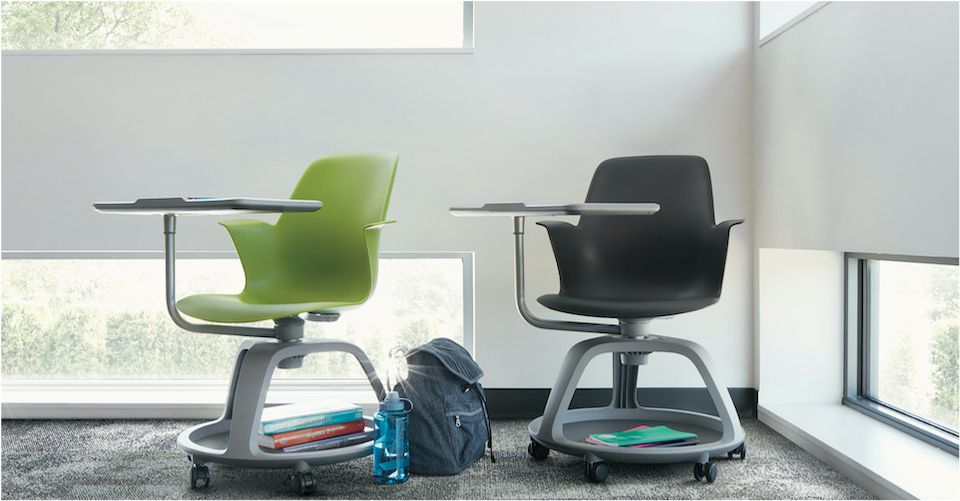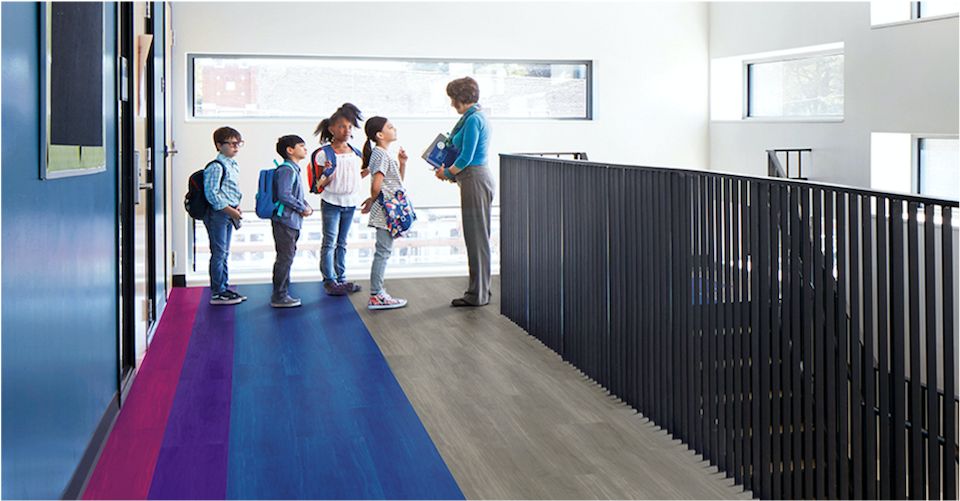To say our K-12 classroom environments are experiencing unprecedented shifts is a dramatic understatement. Even before the global pandemic, we saw the diagnoses of anxiety disorders among youths increase. According to the National Institute of Mental Health, a survey by Harvard Medical School found that almost one-third of adolescents experienced an anxiety disorder. Instances of anxiety in children and teens increased 20% between 2007-2012, and this rise could be attributed to a range of influences, including greater pressure on students to succeed, concerns about safety and the impact of social media. Unfortunately, the pandemic seems to be contributing to the mental health challenges of students. Earlier this year, an EdWeek Research Center survey of high schoolers found that at least one in four reported procrastinating, feeling isolated from classmates, feeling tired during class or having trouble concentrating/remembering more in 2021 than they did in January 2020, before the pandemic.
Given that the Centers for Disease Control and Prevention is encouraging schools to reopen this fall, the pandemic’s disruption of school routines is likely to be short term. However, students’ heightened stress and anxiety began before COVID-19, and these elements are likely to continue after things are back to “normal.” The good news is that intentional design of K-12 learning environments – and the design of classrooms in particular – can help position students for success.
Undoubtedly, there are many factors that contribute to stress and anxiety in K-12 students, and it is important to consider all of them when developing holistic solutions to these challenges. The design of the built space can be a powerful tool in this process – especially if schools apply research into environmental psychology and occupant well-being when designing K-12 learning environments.

Providing flexibility within the classroom through elements like movable furniture gives students choice and control.
Understanding Some Foundational Needs of Learning
It is essential to provide a sense of safety, security, and belonging when creating spaces that foster optimal learning and engagement. According to Lennie Scott-Webber, Ph.D. principal and founder of INSYNC: Education Research + Design, “It goes back to Maslow’s Hierarchy of Needs. If you don’t have a sense of belonging and security, anxiety can increase.”
Within behavioral psychology, Maslow’s Hierarchy of Needs Pyramid states that humans’ base needs – security, shelter, and a sense of belonging – must be met before they can fully engage in more cerebral activities, such as creativity and problem solving. When these foundational needs are met, students are better able to learn and succeed, and they are able to move up the pyramid to levels that promote esteem and self-actualization.
Supporting These Needs Through the Psychology of Design
How might our K-12 classrooms support these foundational needs? The fields of environmental psychology and biophilic design provide helpful guides for creating spaces that nurture students’ feelings of belonging, safety, and overall well-being.
Scott-Webber advises that K-12 learning environments should prioritize creating engagement, especially within classrooms. “As soon as you change the environment, students’ behaviors start to change. This shift occurs because they have been given permission to move around. Space shift is a transfer of power in that it can communicate belonging through an equal distribution of spaces,” said Scott-Webber.
Integrating design solutions that allow students to move around, such as having various zones within one larger space or flexible furniture that is easy to move and clean, can provide this sense of safety and belonging by offering students choice and control.
Fiona Westmoreland, Director of Custom Design, Strategic Portfolio at Interface, Inc. recognizes that surfaces and furniture can achieve multiple goals within a space. “Design elements within a classroom can be powerful in using the space as a tool while sub-organizing zones. For example, flooring can be intentionally designed to subtly measure space which can help with the distancing needs of today, and wayfinding or zoning needs of the future,” said Westmoreland.

Facilitating views to nature is an important aspect of biophilic design.
Fostering Engagement and Well-being through Biophilia
Providing students with a connection to nature in learning settings also drives engagement while reducing stress and anxiety. Interacting directly with nature, such as having classrooms connect safely to outdoor spaces, is especially beneficial in today’s climate because it gives students more freedom with access to elements like fresh air and movement.
It is possible to bring the well-being and learning benefits students experience outdoors into interior spaces through biophilia. Integrating biophilic design in schools and classrooms goes far beyond the incorporation of plants. It seeks instead, to immerse students in the rich experiences and connection they feel when they are actually in nature.
When designing an immersive indoor experience, it is paramount to engage all senses while also fostering a celebration of the location’s natural spirit. Design conversations dedicated to discussing these goals should occur throughout the process, especially in the early stages of the project development. Additionally, here are a few thought-starters to begin incorporating these concepts into future design projects:
- Engage all senses by:
- Fostering non-rhythmic moving elements, such as features shifting water or air
- Designing rooms so that windows facilitate views to nature from both seated and standing positions
- Incorporating natural textures with fractal patterns in finishes and fixtures
- Evoke the spirit of place by:
- Celebrating the cultural history of the site with the design process and elements
- Integrating diverse settings, such as reading nooks, focus areas and collaboration zones, that emulate the ecosystem of the surrounding landscape while fostering learning engagement
- Incorporating colors and sounds found in the surrounding flora and fauna in the design
When successfully implemented, the benefits of immersive biophilic design can be achieved through a wide range of design styles, budgets and client goals.
Supporting a Sense of Safety through Durability and Cleanliness
Reducing anxiety and stress to foster creativity and engagement are vital in creating a strong foundation for learning. However, cleanliness and durability are also essential priorities in our current pandemic environment, especially in K-12 classrooms.
“Facilities managers and education designers are asking for durability, cleanliness and the perception of cleanliness.” Catherine Prossen, National Market Segment Manager, PK-12 Education at Interface, Inc. When creating supportive spaces for students, Prossen further expressed, “Facility managers and designers want to create welcoming spaces that feel comfortable and inviting. Sharing how elements can support comfort through cleanliness has been top of mind.”
Facilities managers find assurance in knowing that the details within a space help support their health and safety goals, and they are incorporating elements to support those goals. Fortunately, it is easy to address these topics during the project process – two simple steps to consider are:
- Talk with facility managers and decision makers about specifying flooring and surface finishes that contain antimicrobial attributes that hinder fungal growth.
- Communicate those unique characteristics to the facility managers and other staff, so they can help translate that information and offer comfort to the people learning in the classroom spaces every day.
Prossen continues “Talking to the decision makers and end-users specifically about the durability and antimicrobial details throughout the design can go a long way in providing comfort and well-being within the process and space.”
Acoustical Considerations
Unquestionably, acoustics are another overarching essential priority when creating classrooms that foster engagement and creativity. Poor acoustics inside classrooms can have a negative impact on teaching and learning experiences. By managing the sound absorption and refraction in a space, schools can eliminate or minimize certain distractions, which can help reduce stress and increase engagement.
It is important to discuss acoustics with specialists and product representatives throughout the design process. Sound dampening goals can be achieved by integrating materials such as textiles, acoustical tiles and carpeting in more active spaces.

Designing education environments that are fun and welcoming will help students transition back to school this fall.
Inspiring Ongoing Growth and Engagement
While there are a wide range of elements to consider when designing safe, durable, and healthy spaces, creating environments that evoke a sense of comfort, health, connection and joy is essential to influencing engagement and overall well-being.
“One important approach for reducing anxiety in education environments is to make them fun, safe, and welcoming spaces,” said Jacob Martinson, Lead Concept Designer at Interface, Inc. “Incorporating these goals can make people enjoy coming back to school. I believe creating engaging spaces will go a long way in reducing stress and allowing students, teachers and staff to more easily get back into the swing of life.”
By considering research-led insights and the deep expertise of product representatives, designers can successfully achieve the goals Martinson outlined regardless of project scope, timeline or budget. Delivering on these aspects means creating spaces that inspire people to not only show up but to have the potential to thrive.
2 responses to “Reducing Anxiety and Fostering Creativity Through K-12 Classroom Design”
Excellent synopsis of findings! Insightful and a pleasure to read. Thanks, Bonnie!
Thanks Bonnie for your tireless work on trying to help people see the important connections between nature and learning, and wellbeing.